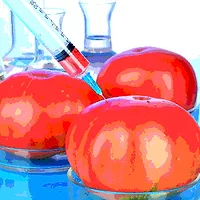Not All Restaurant Checklists are Created Equal

Digital food safety and operational checklists are a recipe for success in the modern restaurant. They make kitchens simultaneously safer and more efficient, enough that digitization efforts often pay for themselves. Over half (59 percent) of paper-reduction projects achieve payback in less than a year, according to the Association for Information and Image Management.
However, not all digital checklist solutions are created equal.
A lack of features and poor design can yield an app that actually interferes with your restaurant’s operations and takes more time than an old-fashioned pen-and-paper approach. Worse, if the system isn’t set up to deal correctly with the digital records it creates, it could potentially lead to even greater legal liability down the road. “A digital checklist could end up costing you more money if you don't do it the right way,” says Tom Woodbury, vice president of National Accounts at ComplianceMate.
Yet, if digital checklists are well worth the investment generally, how can you ensure you get a good solution that will provide a solid return-on-investment?
When evaluating a digital checklist solution, ask the following questions.
1. Is it genuinely more efficient to use the digital checklist than to use pen-and-paper?
Efficiency depends on a well-designed app. For example, does the app auto-advance between sections, or does it force users to navigate between multiple screens to complete a single line item? Does the app interface with a wireless, handheld temperature probe, or must all information be input by hand? Issues like these can frustrate users and cause unnecessary delays. “Users spend so much time managing the app that they’re not managing the checklist,” says Tom.
Looking for quick answers on food safety topics?
Try Ask FSM, our new smart AI search tool.
Ask FSM →
Kitchen staff should be able to complete an average digital checklist via tablet in just a few minutes. In fact, a good digital checklist will enable restaurants to increase the number of checklist items and still require less time to complete them. For a location with six or so line checks throughout the day, that alone will put over an hour back into the store or kitchen manager’s day yet cover safety, quality, and branding issues more effectively.
2. Can users get started with the system immediately?
This question also centers around good design. The checklist systems should be intuitive; if you can't hand a tablet to the average kitchen worker, give them 90 seconds of training, and then have them be able to use it in full, the system is too complicated. A digital solution shouldn’t add functionality only to sacrifice simplicity, clarity, and usability.
Nevertheless, the system should still offer genuinely helpful functions, but that functionality should be simple to navigate for users—or entirely automated. For example, beyond yes/no and numeric/temperature entries, make sure entries and list items will be time- and date-stamped. That added calendar information is invaluable when auditing and analyzing data to spot trends or systemic issues. A modern checklist system should also make good use of today’s digital devices, like using built-in cameras to generate photo entries that can substantiate other claims (e.g., were the dishes cleaned in a timely way? Here’s a time- and date-stamped photo proving they were.)
3. Will the system help you to identify trends/problems across multiple units?
It’s surprisingly rare for digital checklists to a.) provide information above a single unit or b.) to make the information meaningful enough to translate raw data into actionable insight. If you have more than one store and the system fails to effectively report data organization-wide, you lose most of the benefits of a digital solution. The system should also be able to flag anomalies and exceptions, generate alerts whenever entries exceed a custom-set threshold, and allow you to identify trends across your entire organization.
4. Will the system prompt and facilitate corrective actions?
What happens if a checklist item fails to meet the threshold or specification allowed by the restaurant? The system itself will ideally prompt corrective actions automatically. For example, if the temperature of a dish is too low, the system might offer the option of one or more retries, suggesting that the user stir the pot to better balance the heat, and then temperature check again.
In other words, it’s not enough just to identify aberrations that can affect food safety. Action must be taken to bring the situation back into specification. The digital checklist can play an active role here.
5. Will my digital system help identify and prevent fraud?
A digital solution can protect against falsifying entries (pencil whipping)—if it’s designed to do so. Paper provides no controls to verify the time the checklist was really completed or the accuracy of the recorded information. One ComplianceMate customer once made a surprise visit to one of his stores on Friday afternoon and discovered the store's paper checklists had already been filled out—for the entire weekend.
Look for a digital solution that implements controls against this kind of fraudulent behavior. For example, it might limit access to the checklist to certain time ranges. Ideally, it will also analyze entries for anomalies. Was this checklist completed unusually quickly? Does that checklist contain identical values in all fields? The system itself should be able to spot questionable behavior and prompt managers or executives to inquire further.
With the right checklist, restaurants can streamline their kitchen operations, improve their food safety profile, and save time and money. But before you dive into digitization, make sure you’re asking the right questions to identify a product that can achieve those outcomes.
The ComplianceMate system addresses a critical need for proactive food safety initiatives at growing restaurant chains. Through a combination of wireless temperature sensors, mobile technologies, and easy-to-use tools built for the modern kitchen, ComplianceMate gives you total control over food safety and compliance at your stores. For more information, contact ComplianceMate.








